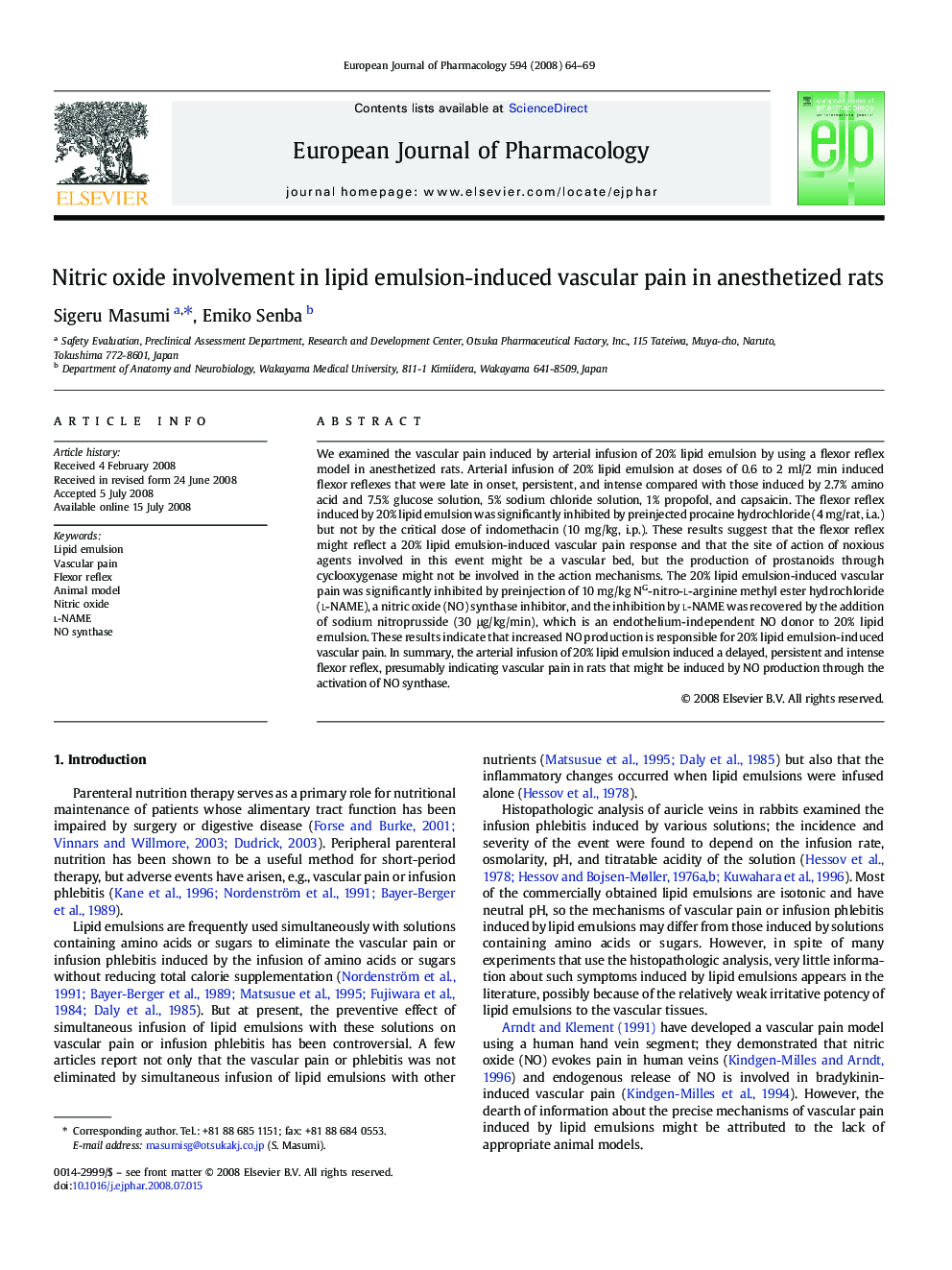| Article ID | Journal | Published Year | Pages | File Type |
|---|---|---|---|---|
| 2534899 | European Journal of Pharmacology | 2008 | 6 Pages |
We examined the vascular pain induced by arterial infusion of 20% lipid emulsion by using a flexor reflex model in anesthetized rats. Arterial infusion of 20% lipid emulsion at doses of 0.6 to 2 ml/2 min induced flexor reflexes that were late in onset, persistent, and intense compared with those induced by 2.7% amino acid and 7.5% glucose solution, 5% sodium chloride solution, 1% propofol, and capsaicin. The flexor reflex induced by 20% lipid emulsion was significantly inhibited by preinjected procaine hydrochloride (4 mg/rat, i.a.) but not by the critical dose of indomethacin (10 mg/kg, i.p.). These results suggest that the flexor reflex might reflect a 20% lipid emulsion-induced vascular pain response and that the site of action of noxious agents involved in this event might be a vascular bed, but the production of prostanoids through cyclooxygenase might not be involved in the action mechanisms. The 20% lipid emulsion-induced vascular pain was significantly inhibited by preinjection of 10 mg/kg NG-nitro-l-arginine methyl ester hydrochloride (l-NAME), a nitric oxide (NO) synthase inhibitor, and the inhibition by l-NAME was recovered by the addition of sodium nitroprusside (30 μg/kg/min), which is an endothelium-independent NO donor to 20% lipid emulsion. These results indicate that increased NO production is responsible for 20% lipid emulsion-induced vascular pain. In summary, the arterial infusion of 20% lipid emulsion induced a delayed, persistent and intense flexor reflex, presumably indicating vascular pain in rats that might be induced by NO production through the activation of NO synthase.
